
10 Ways Research Chimps Embrace Retirement
Living it up
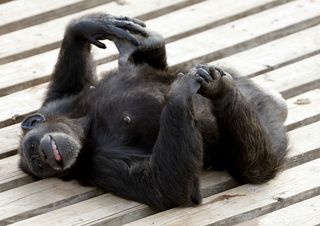
Michael Sharp is assistant managing editor, Publications and Brand Management, at The Humane Society of the United States (HSUS). This Op-Ed was adapted from one that appeared on the HSUS website. Sharp contributed this Op-Ed to Live Science's Expert Voices: Op-Ed & Insights.
They’ve already checked “road tripping through the South” off their retirement bucket list.
Now they’re making their way through “trying out acrobatics” and “chowing down on a tropical treat.” Yes, for these 110 chimpanzees—the largest group of government-owned chimps ever sent to sanctuary—the golden years are off to a glorious start. Retired from a laboratory starting in 2013, they’ve arrived at Chimp Haven sanctuary in waves to begin their new lives in the Louisiana sun.
Going Fishing
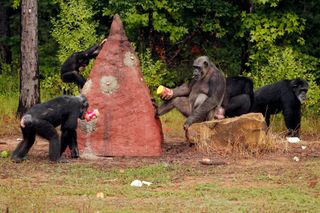
Little winged insects never tasted this good: The chimps use sticks and bamboo to fish out applesauce, ranch dressing, ketchup, honey and other treats from this manmade “termite mound."
Spending Some Quality Time with Family
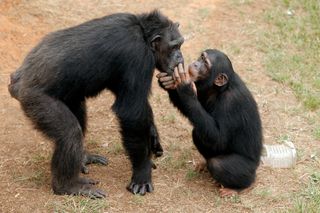
Born at New Iberia Research Center, 4-year-old Diane remains close to her mother, Muffy. On the day their group was released into a new habitat, they hung back near the entrance together until Diane was ready to explore the forest. “When there’s activity going on in the group,” explains animal care specialist Mark Lewis, “she’ll always kind of have a hand on her mom’s back, as reassurance.”
Chasing the Ladies
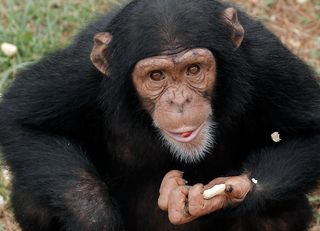
Meet Mason. He’s 5 but already a budding ladies man. “He likes to play with the other girls,” Lewis says, “and he likes to follow some of the older females around.”
Continuing Their Education
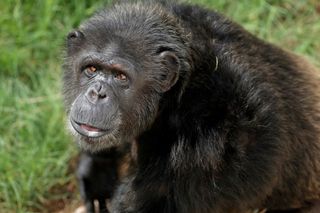
Ashely is acing the sanctuary’s positive reinforcement training program, wherein staffers teach chimps to present various body parts against the mesh. The clicker training helps vets address injuries and other ailments. “Right now,” Lewis says, “she knows her hands, her head, lips, and she was working on arms the last time I watched her train.”
Trying New Sports
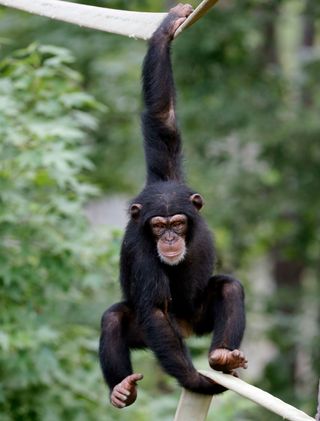
Arden, who just turned 4, was the first juvenile from New Iberia to venture up into the trees. Like a lot of the youngsters, she picked up her high-flying-on-a-fire-hose ways from watching 7-year-old Tracy, who’s having fun reliving her own infant years with all these newcomers around.
Exercising a Chimpanzee’s Right to Eat
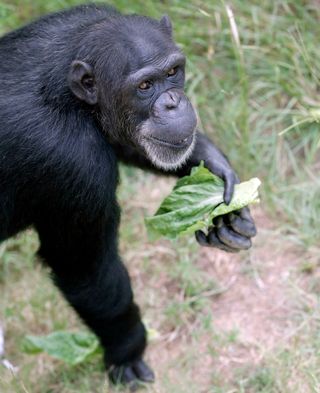
Hillary has a unique preference for veggies. Sweet treats like frozen pineapple halves are among the produce delivered daily, but, notes Lewis: “I’ve actually seen her eat zucchini before she eats her banana.”
Sign up for the Live Science daily newsletter now
Get the world’s most fascinating discoveries delivered straight to your inbox.
Doing Puzzles
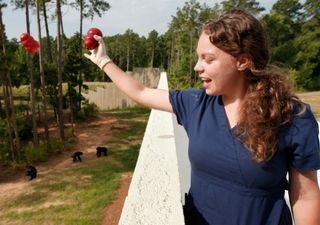
Leilani Case and other Chimp Haven staff toss enrichment items to the chimps, including Kong toys stuffed with treats like mashed potatoes. “We throw out things that they have to forage through so that they don’t just get the food handed to them,” Lewis says. “It also keeps their minds active.”
Learning a New Language
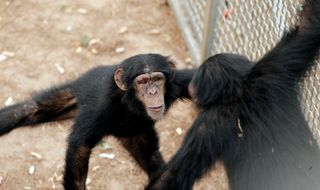
Five-year-old Jimmy, shown here possibly in the midst of a pant-hoot, is spending more time with the older males, watching them “display”—loud acts that show off their strength and dominance, like punching a doorframe or shaking the mesh. Jimmy’s even been trying his hand at it, though as Lewis says: “Nobody takes him seriously yet because he’s not old enough for it.”
Working on Their Tans

The 20-foot climb up the large wooden play structure in the play yard is well worth it, both for the rays and the gossip potential. Chimps like Star can catch a moment in the sun—and a prime view of what’s going on in other habitats.
Meeting an Old Friend for a Drink
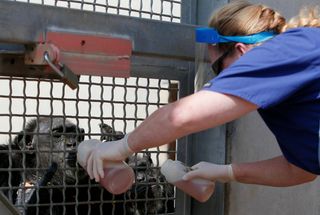
Karen (left) and Phyllis take their daily medicine crushed up in watered-down grape juice. Some chimps receive heart meds; others get supplements for joint pain or birth control. These two belong to a small, tight-knit group of older chimps. “They look out for each other,” says Lewis. “If one is not feeling well, they’ll stay with them.”
The views expressed are those of the author and do not necessarily reflect the views of the publisher. This Op-Ed was adapted from 10 Ways These Historic Chimps Are Enjoying Retirement" on the HSUS website. This version of the article was originally published on Live Science.
